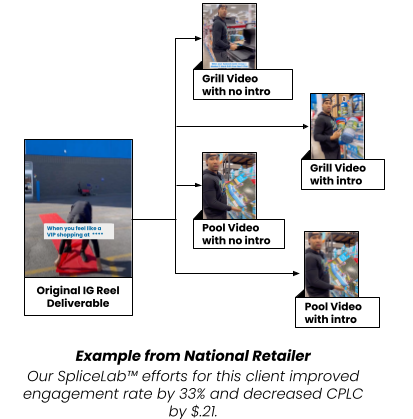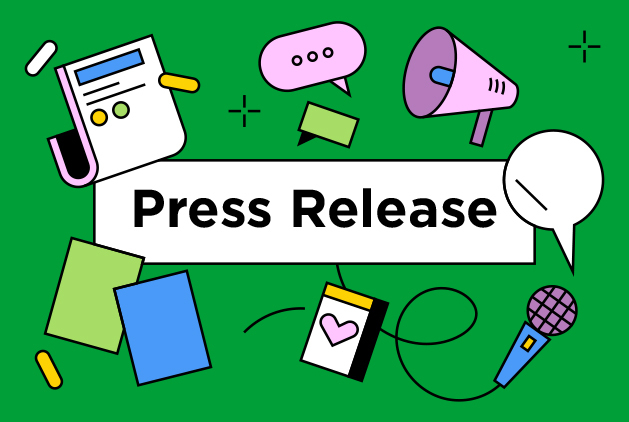TL;DR
The #1 question we hear from CMOs: “How do we actually know if this worked?” The answer isn’t more sophisticated attribution models so much as it’s building flywheels that turn every campaign into fuel for the next one.
Let’s break down our proven methodology for creating measurement systems that don’t just track performance, but actively improve it through continuous learning loops.
The Attribution Anxiety Problem
Walk into any CMO’s office and you’ll hear the same refrain. The marketing team is excited about their latest influencer campaign. The content was authentic, engagement was through the roof, and brand mentions are trending. But when it comes to proving ROI, everyone gets quiet.
What it sounds like:
- “How do we know it worked?”
- “What are your benchmarks?”
- “Our CFO wants to see direct attribution.”
- “We can’t justify spend without clear ROI tracking.”
What’s really happening: 76 percent of marketers say influencer marketing delivers better ROI than other marketing channels, and 85 percent say it’s effective. The problem is brands are trying to measure influencer marketing like paid search, expecting linear, last-click attribution. Understandable, but influencer goes live on channels that work through trust, social proof, and distributed touchpoints. Across native and paid environments.
According to Influencity, 56 percent of CMOs say attribution is their top concern in influencer marketing. And the traditional approach treats measurement as a post-campaign afterthought. You run the campaign, check the numbers, and move on to the next one.
But what if measurement wasn’t just about proving what happened? What if it’s about making what comes next exponentially better?
🧠 Insight: The problem isn’t that influencer marketing is unmeasurable. It’s that you need an optimization flywheel that captures learnings and feeds them back into performance improvements. We have that. An optimization flywheel.
From Brief to Optimization Loop
A lot of influencer campaigns die when the content goes live. Performance campaigns are just getting started.
Think about your last influencer campaign. You probably briefed creators, they made content, you posted it, maybe you boosted a few posts, and then you moved on. What you may not have done is systematically capture why certain content worked while other content didn’t, or how those learnings could make your next campaign 30 percent (give or take) more effective.
Phase 1: Strategic Content Generation
Traditional briefs ask creators to “make something authentic about our product.” Performance briefs are built for optimization from day one.
Strategic Creator Briefing:
Instead of treating creator content as a one-and-done asset, high-performing teams develop briefs designed to generate performance insights. Each piece of content is crafted to explore different angles – whether that’s tone, product positioning, or audience need state – so your team can gather actionable signals, not just impressions.
Multi-Format Content Creation:
Rather than a single post, creators develop content variations that allow your team to identify what resonates across platforms and audience segments. This intentional diversity creates the foundation for scalable content testing and future performance improvement.
Phase 2: SpliceLab™ Content Optimization

This is where most brands leave money on the table. They take creator content at face value—using it organically or boosting it as-is. But SpliceLab™ takes a performance-first approach: optimizing creator content through a structured process that has shown to increase campaign impact by over 30%.
How it works:
We start with high-performing creator content and refine it through a repeatable optimization model. This includes analyzing creative patterns, enhancing the strongest elements, and aligning variations to specific funnel stages and platform behaviors.
Instead of one-size-fits-all content, you get a dynamic library of assets designed to perform across formats and audiences – with every iteration feeding smarter decisions back into future briefs.
Phase 3: Allowlisting Performance Amplification
This is where native authenticity meets paid media precision.
Instead of choosing between creator-led storytelling and performance-driven media, allowlisting gives you both—at scale.
Native content builds trust and cultural resonance. Paid amplification ensures strategic reach, audience targeting, and budget control across platforms. Together, they create a performance layer that extends your campaign’s impact and reach.
Variable Testing: The Science Behind Performance
Most brands test creatives and hope something sticks. Performance brands look deeper, identifying the underlying signals that drive outcomes and improving them systematically.
If a campaign performs well, can your team explain why? If it underperforms, do they know what to change?
At The Shelf, we focus on performance clarity—studying repeatable patterns across creator selection, content approach, and audience response. These insights help us refine campaigns over time – not through guesswork, but through intentional calibration.
🧠 Insight: Brands that test variables instead of just creatives see 3x faster performance improvements because they understand the underlying drivers, not just surface-level results.
The Optimization Flywheel: Turning Data Into Competitive Advantage
Traditional attribution answers “what happened?” Performance attribution answers “what should happen next?”
The optimization flywheel is what separates performance influencer marketing from experimental spending. Every campaign feeds data into a learning system that makes subsequent campaigns more effective.
How the Flywheel Works
Traditional attribution asks, “What happened?”
Performance attribution asks, “What should we do next—and why?”
That shift is where the optimization flywheel changes everything.
Instead of wrapping campaigns as isolated events, the flywheel transforms each activation into fuel for the next. Engagement becomes insight. Insights shape strategy. Strategy improves outcomes. And the cycle compounds.
What It Powers:
- Creator briefs informed by performance patterns
- Budget decisions based on real-time campaign intelligence
- Targeting refined with each execution, not just each quarter
By Month 6, your system isn’t just optimized—it’s smarter. One client cut CPA by 47% without increasing budget—because every campaign made the next one better.
🧠 Insight: The real advantage isn’t the content. It’s the rate at which you learn what works—and apply it faster than your competitors.
Native + Paid Integration: Measuring Holistic Impact
The most effective influencer campaigns aren’t native or paid—they’re native and paid, designed to work in sync.
Native content builds trust and relevance. Paid media adds precision and reach. When those two layers are integrated, campaigns deliver more than impressions—they build durable value across the funnel.
The challenge? Traditional attribution models aren’t built to capture that kind of interplay. They miss the long tail of organic engagement and the compounding value of audience familiarity.
Integrated performance looks like:
- Lower costs through content reuse
- Higher-quality audiences warmed by organic engagement
- Greater lifetime value from customers acquired through trusted channels
🧠 Insight: Brands measuring native and paid in silos miss 40-60% of campaign value. Integration multiplies impact, not just reach.
Executive Reporting – Translating Influence Into Business Language
Your CFO doesn’t need to see engagement rates.
They need to understand how your influencer program contributes to predictable growth, operational efficiency, and competitive advantage.
Influence becomes high-value when it moves beyond marketing KPIs and into business language:
Performance That Matters:
- Revenue attribution that reflects both immediate impact and strategic improvement
- Stronger customer quality—higher retention, deeper affinity, longer LTV
- Improved cost efficiency as systems mature over time
Strategic Reporting:
- Brand lift and market share gains across key segments
- Share-of-voice momentum driven by consistent creator integration
- Risk reduction through diversified acquisition channels
Predictive Planning:
When executed correctly, influencer marketing doesn’t just reflect performance—it helps shape it.
Forecasting becomes more precise. Campaign cycles shorten. Future creative and media spend becomes easier to justify because the system gets smarter over time.
🧠 Insight: The real ROI isn’t just acquisition—it’s improvement. Campaigns don’t just convert. They compound.
Building Your Performance Infrastructure
Most brands try to scale influencer campaigns before they build the measurement systems to support them. That’s backwards.
If you want performance, you need infrastructure first.
What performance-focused brands do differently:
- Audit for attribution blind spots
→ Before launching anything, map what performance signals you’re missing and where campaign value might be leaking. - Align content and measurement early
→ When creator briefs are connected to clear performance goals, content becomes both conversion fuel and learning material. - Unify native and paid campaign tracking
→ Integrated performance requires integrated data. Measure cross-channel value, not just isolated outcomes. - Translate results into business language
→ LTV, retention lift, and cost efficiency matter more than impressions. Build reporting that speaks CFO. - Optimize fast, not just at scale
→ The real advantage isn’t scale—it’s learning velocity. Brands that improve faster outperform, even with smaller budgets.
🧠Insight: The teams that build performance systems before they scale see 2–3x better outcomes in their first six months.
Wrap: Your Competitive Moat Isn’t Creative—It’s Learning Velocity
The future of performance marketing belongs to brands that improve faster than their competitors. Creative can be copied. Audience insights can be bought.
But the ability to learn and adapt faster than the market? That’s your moat.
When you walk into a budget meeting with evidence that your influencer program doesn’t just drive results—but compounds value with every campaign—the conversation changes.
You’re not asking for budget. You’re presenting an engine.
This is what separates performance from experimentation.
While others chase viral moments, you’re building a repeatable system that sharpens with every execution.
The brands winning at scale aren’t the ones with the flashiest content or the biggest budgets.
They’re the ones with the fastest feedback loop—and the clarity to act on it.
🧠 Insight: Don’t just track performance. Build systems that create it.
🎯 Ready to build measurement that compounds?
The optimization flywheel isn’t theoretical—it’s the backbone of performance marketing systems that improve with every campaign. If you’re ready to turn influencer activity into repeatable growth, let’s talk.




